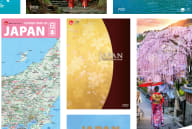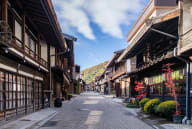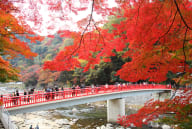
Tokushima Unique flavours born from pure nature
A Culinary Journey in Tokushima
Tokushima, a vibrant prefecture on the eastern side of Shikoku, offers striking natural beauty, cultural richness, and unique culinary traditions. Bordered by the Seto Inland Sea to the north and the Pacific Ocean to the south, Tokushima enjoys a mild climate with warm summers and cool winters, providing an ideal setting for diverse agricultural and marine activities.
Tokushima is celebrated for its abundant agricultural produce, forestry products, and seafood. The fertile plains of the Yoshino River basin produce high-quality rice, while the coastal areas are known for their fresh seafood, including sea bream and abalone. Local specialties include Sudachi, a fragrant citrus fruit used to flavour dishes and drinks, and Naruto Kintoki sweet potatoes, renowned for their natural sweetness and vibrant yellow flesh. These unique ingredients highlight the prefecture's commitment to fresh, locally sourced produce and traditional cooking methods.
Tokushima is also famous for its unique blue-dyed indigo, Awa-ai, reflecting the prefecture's rich natural environment and cultural heritage. Additionally, Tokushima is celebrated for its vibrant Awa Odori dance festival, where visitors can immerse themselves in the lively atmosphere and savour local delicacies. The prefecture's dedication to preserving its cultural heritage is evident in its culinary practices, emphasizing sustainability in terms of both seasonality and locality. Whether exploring the scenic landscapes of the Naruto Whirlpools, or enjoying a meal at a traditional restaurant, one cannot help but be in awe of Tokushima’s rich cultural heritage and natural beauty.
Savour the tastes of Tokushima and experience the prefecture's unique blend of great nature, culture, and gastronomy.
Tokushima ramen

What it is (Ingredients)
Tokushima ramen is a flavourful noodle soup with rich, soy-flavoured pork bone broth. The ramen is often topped with pork belly stewed in a richly seasoned sauce, as well as bean sprouts, bamboo shoots, green onions, and a raw egg to add a creamy texture. The soup stock comes in three different varieties, white, brown, and yellow – each said to have their origins in different areas within the prefecture (Komatsushima, Tokushima city, and Naruto, respectively). The noodles are typically straight, medium-fine, short and soft to absorb the robust flavours of the broth perfectly.
History/Origin
Tokushima ramen originated in the early 1900s when a Chinese resident of Tokushima began selling ramen at a Yatai (mobile ramen stall). Over time, it spread organically, satisfying the local populace’s appetites and evolving through various changes to become the beloved dish it is today. Tokushima ramen became famous nationwide recently by being served at the Shin-Yokohama Ramen Museum in Yokohama City, Kanagawa, in 1999. Its distinctive features, such as the colour of the soup, the topping of boiled pork belly instead of the usual pork Chashu (sliced BBQ pork), and the addition of a raw egg to the soup, quickly attracted a large number of people, setting it apart from regular ramen.
Where to Eat
Tokushima ramen can be found at numerous ramen shops throughout Tokushima prefecture.
When to Eat
Tokushima ramen is popular year-round, especially for warming up on cold winter days. Its rich and savoury broth makes it an ideal choice for any time of the day, whether you're seeking a hearty lunch or a fulfilling dinner.
Dive into a bowl of Tokushima ramen and savour the rich, umami flavours that have made this dish a beloved part of Tokushima's food culture.
Handa Somen (Handa-style noodle)

What it is (Ingredients)
Handa Somen is a type of fine wheat noodle known for its delicate texture and smoothness. Made from high-quality wheat flour, salt, and water, these thin noodles are carefully stretched by hand and dried in the open air, resulting in a silky tenderness to each bite.
History/Origin
Handa Somen originated in Handa Town of Tokushima, where noodle-making traditions date back over 300 years. The noodle-making method is believed to have been introduced to Handa from present-day Nara Prefecture. The area’s unique climate and natural resources like the clear water of Yoshino River contribute to the distinct quality of Handa Somen, making it a cherished local specialty. The meticulous hand-stretching technique has been passed down through generations, preserving the authenticity and excellence of these noodles.
Where to Eat
Handa Somen can be enjoyed in various restaurants and eateries across Tokushima prefecture. It is commonly served cold with a light dipping sauce in summer, but can also be enjoyed hot with a warm broth in winter.
When to Eat
Handa Somen is particularly popular during the summer and is served chilled, providing a refreshing and light meal. However, its delicate texture and subtle flavour make it a delightful choice year-round, whether served hot or cold. The noodles' versatility allows them to complement a variety of dishes, from simple bowls to elaborate meals.
Savour the traditional taste of Tokushima with Handa Somen, a testament to the region's rich culinary heritage and artisanal craftsmanship.































































